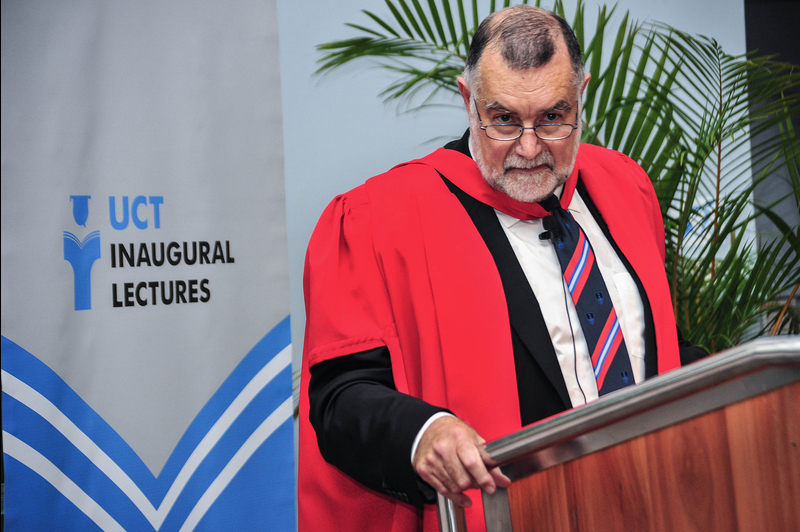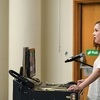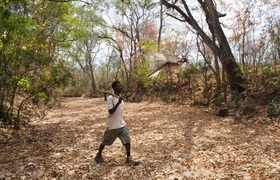Inaugural lecture charts roadmap to understanding brain function
15 April 2013
It is every human being's responsibility to understand how they use their brains. This was the contention of Professor Lauriston Kellaway of the Faculty of Health Sciences' Department of Human Biology during his recent Inaugural Lecture, titled Neurons, Cells and Circuits - The Roadmap to Understanding Brain Function. So much has been written about the brain, yet so much remains to be explained.
"Why do we love? Why do we dislike? Why do we feel threatened? Why do we feel inspired? Why do we feel depressed? Why do we want to kill our fellow human beings? These are all questions that are answerable if we really understand how the brain functions," said Kellaway.
Learning new tricks
Cognitive neuroscience, he said, has shown convincingly that the human brain can be shaped by external influences, "so we really do need to understand the interaction between our brain and the environment in which we find ourselves". There was no such thing, in the human sense, as not being able to teach an old dog new tricks.
"Our brains are extraordinarily plastic, meaning that we are activating synapses and forming new synapses all the time. We have the ability to learn well into old age," Kellaway said. The decade between 2000 and 2010, which was declared the Decade of the Brain, saw an explosion of scientific data in the arena. Many thousands of papers were published, and the number of delegates who attended gatherings of the Society for Neuroscience, one of the biggest societies of its kind in the world, grew to beyond 34 000 over the decade. The development of neuroscience has deep roots in Africa. Africa (and more specifically South Africa) has contributed some of the finest thinkers in the field, among them prominent neuroscientists Rodney Douglas and Kevin Martin, alumni of UCT who now work together and co-chair the Institute of Neuroinformatics in Switzerland.
Heading a core team
"Both are South African, born and bred. Both are graduates of UCT and have had an enormous influence in the development of neuroscience. They bring together the core team of multi-disciplinary experts - ranging from neuromorphic engineers, to computational and mathematical gurus, biologists and neurophysiologists - currently supporting a huge team of doctoral and postdoctoral students at the institute," said Kellaway.
As further evidence of the influence of South Africans in the world of neuroscience, Kellaway cited another UCT graduate: Henry Markram, director of the Human Brain Project. He said the biggest funding award in the history of neuroscience - €1-billion (about R12-billion) - had been granted to the Project by the European Union (EU).
Offering a new understading
The project is a large-scale, decade-long European research project which aims to simulate the most exact human brain ever in a supercomputer - a world first. The goal of the project is to pull together all existing knowledge about the human brain and to reconstruct it, piece by piece, for simulation models. The models offer the prospect of a new understanding of the human brain and its diseases, and of completely new computing and robotic technologies.
Referring to the pivotal role played by South Africans in the world of neuroscience, Kellaway posed the question: "What is it about towns in South Africa, like Cape Town, Kuruman and Beaufort West, that has produced these world-renowned scientists of such vision and genius?" - quipping that boerekos, Mrs Ball's Chutney and biltong could have played a role.
 This work is licensed under a Creative Commons Attribution-NoDerivatives 4.0 International License.
This work is licensed under a Creative Commons Attribution-NoDerivatives 4.0 International License.
Please view the republishing articles page for more information.










